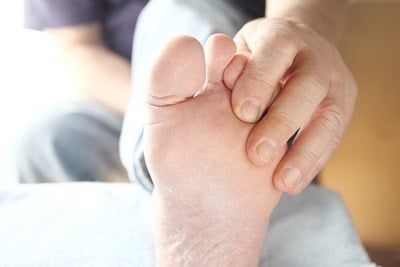Hammer toe is a condition that usually affects your second or third toe. The affected toe bends at the joint and is, at first, still flexible. If left untreated, however, you can lose mobility of the toe. When this happens, surgery is needed to correct the deformity. Here is everything you need to know about hammer toe, including symptoms, causes, diagnosis, and treatments.
Symptoms
Experiencing pain with hammer toe is normal, especially when wearing shoes. Corns or calluses that develop on the sole of your foot, or form on the top of the middle joint of the toe, or tip of toe are also common symptoms of the condition.
Causes
The most common cause of hammer toe is ill-fitting shoes. When your wear shoes that are too tight or narrow, your toes are pushed into a bent position. Your toes then rub against your shoe, causing corns and calluses.
Shoes with high heels force your foot down and squish your toes against your shoe. Over time, your toe suffers from a muscle imbalance. Because your toe muscles are forced in a position for a prolonged time, they tighten and eventually you can no longer straighten your toe.
Risk Factors
The following factors increase your risk for hammer toe:
- Age: The risk of hammer toe increases with age.
- Sex: Hammer toe is most likely to be seen in women who wear shoes that do not fit comfortably or who wear high heels frequently.
- Toe length: You have an increased chance of hammer toe if your second toe is longer than your big toe.
- Diseases: Conditions such as arthritis and diabetes can increase your risk for hammer toe.
- Genetics: Traits that can cause hammer toe, such as flat feet or a high arch, can be inherited.
Diagnosis
A hammer toe can be diagnosed during a physical exam by a doctor. If your toe is injured, imaging tests (such as an X-ray) will be done.
If you are experiencing pain, or notice a change in your toes appearance, make an appointment with your doctor.
Treatment
For mild hammer toe that is caused by improper footwear, treatment begins with new shoes. You will want shoes that fit properly in length and width—stop wearing shoes that are too tight or narrow.
Your doctor may also suggest that you do toe exercises at home. These exercises will stretch and strengthen the muscles in your toe.
Hammer toe can also be treated with splinting, or by wearing toe pads, cushions or insoles in your shoes. Not only will your pain be relieved, but padding and splinting also helps correct the appearance of your toe by shifting it into correct position.
Severe hammer toe that has caused immobility, damage, or further deformity will require surgery. The procedure is outpatient, which means you can go home the same day as the surgery. Post-operation you may experience stiffness, swelling, and redness. You will be able to walk, but you should keep your foot elevated as often as you can while recovering.



